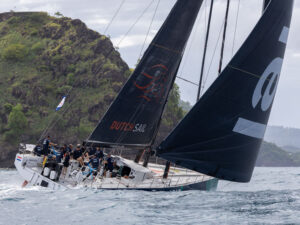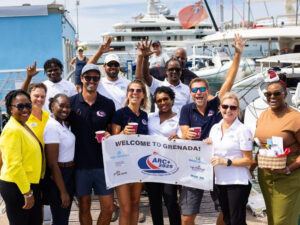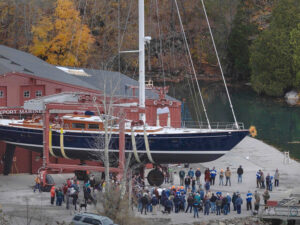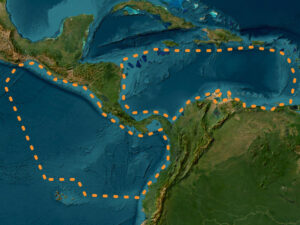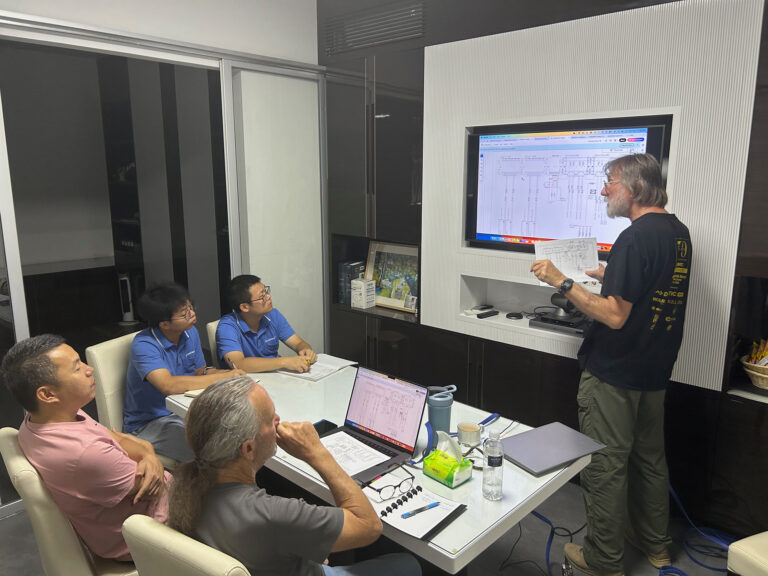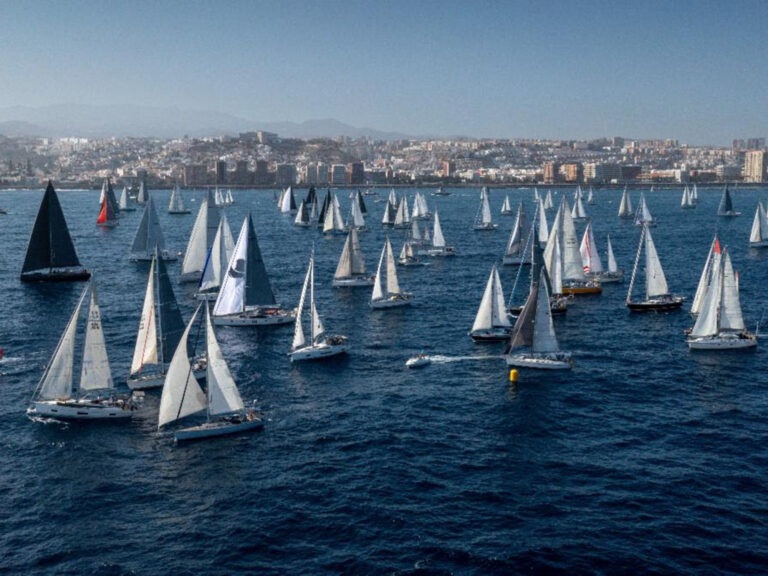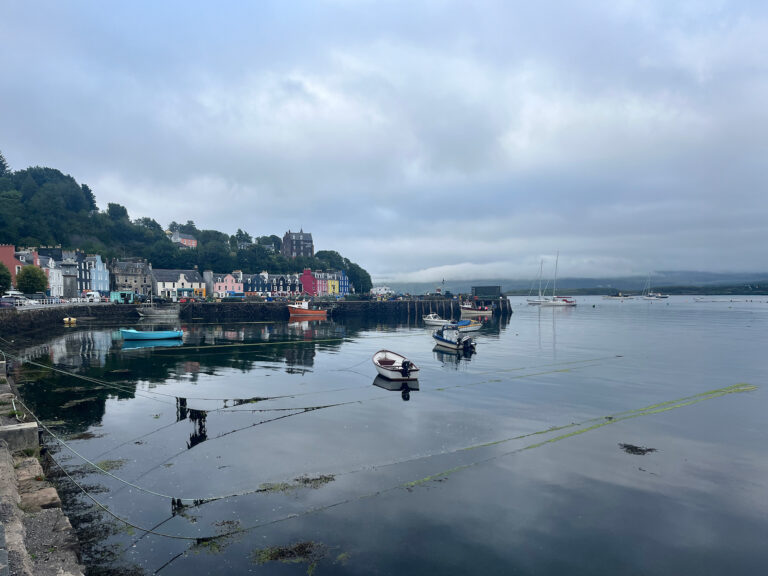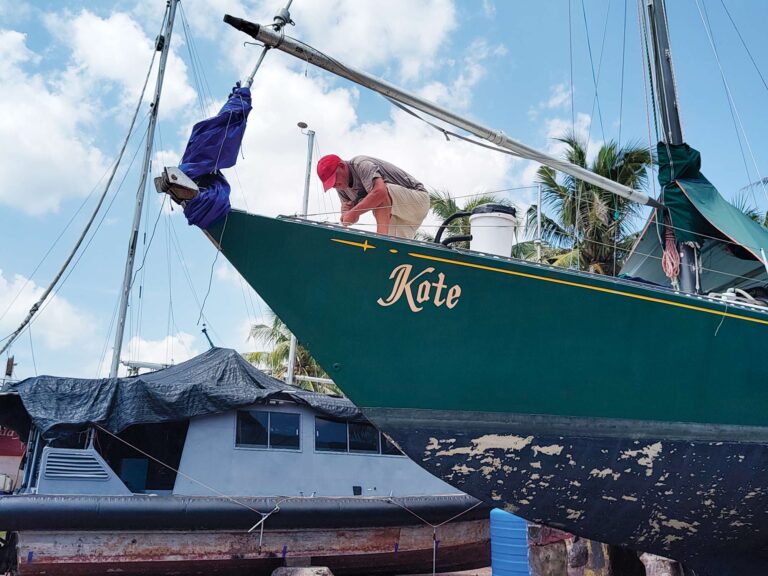
Florida docks 368
At the 2006 Fort Lauderdale International Boat Show, thousands of people traipsed the docks of Bahia Mar Marina to look at new gadgets and the shiny, fiberglass yachts that lined the docks facing Florida’s Intracoastal Waterway. Pushing to get a front-row view of the boats, many more than 100 feet long, most in the crowd were oblivious to the fact that they were standing on a literary landmark.
John D. MacDonald’s fictional detective, Travis McGee, was a liveaboard boater, and his houseboat, the Busted Flush, was based in Bahia Mar’s slip F-18. While solving mysteries in the 1960s and 1970s, McGee was constantly shaking his head at Florida’s rampant overdevelopment and environmental losses. We can only imagine what he’d say about Fort Lauderdale now. At Bahia Mar’s monthly rate of $2.60 per foot per day, with a 40-foot minimum, it would cost close to $4,000 per month for McGee to dock the 52-foot Busted Flush in its old slip. Chances are that by now he’d have moved to somewhere up in northern Florida.
While there’s little hard data regarding the number of boat slips in Florida, the Florida Department of Environmental Protection estimates that the total now is about the same as it was in 1987. Over the same period, the number of registered boats in the state has risen more than 50 percent. It’s no wonder that water access is listed by the Marine Industries Association of South Florida as one of the biggest issues affecting cruisers.
Fort Lauderdale proudly claims the title of “Venice of America” on promotional materials. One local restaurant even offers gondola tours of the local canals. Off the glitzy Las Olas Boulevard, which is lined with palm trees, high-end shops, clubs, and restaurants, are Hendricks Isle and the Isle of Venice. These two residential islands stretch like fingers out into the canal system and boast deep-water slips along each side. The islands are residential, and each apartment complex or condominium owns the five or 10 slips connected to the property.
Hendricks Isle and the Isle of Venice have been Lauderdale’s liveaboard heaven since the days of Travis McGee. Some of the boats have probably been there just as long. A dinghy trip up the canals reveals boats of all types and in all states of repair, each nestled within a few feet of the next, each hooked up to a permanent pumpout hose and plugged comfortably into shore with electrical, cable, and telephone lines. Many of the owners work at local marine businesses and are either saving money to go cruising or have cruised extensively in the past.
The apartment complexes are funky. Lined with bougainvillea and oleander, they’re painted in Florida pinks and blues. Many are Art Deco in style and design. But cranes and construction crews are becoming as common as the noisy Quaker parrots that live in the isles’ palm trees. Small apartment complexes are being torn down and replaced by taller, roomier townhouses and condos going for more than $1 million per unit. When the complexes are sold, the liveaboard slips become private, and tenants have to move on.
After Maule Lake Marina in North Miami Beach closed in 2006, I had to try to find a new slip, along with some 85 other boat owners. Hendricks Isle and Isle of Venice were among the first places I looked, but the sight of construction gave me an uneasy feeling. Construction usually means one thing for people like me: Your time here is almost up.
In my search, I found quite a few apartment complexes with open slips. I was quoted prices ranging from $600 to $900 per month for my 28-foot Columbia.
A scan through the classifieds of the Fort Lauderdale Sun-Sentinel or the Waterfront News, a paper found at most southern Florida marinas and chandleries, reveals ad after ad for dock space. But most also say “No liveaboards” (usually abbreviated to “No lvbd”).
A few havens for liveaboards still exist in Lauderdale. One place, too small to be called a marina, sits in a residential area on the North Fork of the New River. It advertises “shaded liveaboard/storage/ pool/laundry/clubroom/bath/shower/
ample parking/cable/phone/pumpouts.” The price, at less than $600, is reasonable, and the liveaboard crowd seemed friendly and welcoming, but I must admit that I worried a little about my safety in the surrounding neighborhood.
My search last year ended in nearby Dania Beach: the Royal Palm Yacht Basin’s ad proclaimed, “Liveaboards welcomed.” I checked it out, and while it was pricier-about $800 per month-I saw no sign of construction, and the dockmaster swore to me that the owner had no intention of selling to developers any time soon.
Better Deals West
The west coast of Florida has a reputation for being more laid-back and relaxed than the east coast, although waterfront development is coming quickly. Driving over the Sunshine Skyway Bridge on a recent trip, I watched dozens of sailboats scud across Tampa Bay and considered yet again the advantages of living in this area, with its large sailing community.
The highlight of St. Petersburg is the Municipal Marina, which is downtown. The marina has great access to Tampa Bay, more than 600 slips, and a thriving liveaboard community. It also has approximately a five-year waiting list. This isn’t unusual-the Municipal Marina in Hollywood, Florida, has the same. The St. Pete Municipal Marina is closed to transients because it’s undergoing construction, but there’s a plan to reopen the marina by July 2007, if not sooner. Unlike most marinas under construction in southern Florida, the Municipal Marina isn’t being torn down and converted to condos. All the slips are being rebuilt in concrete, and the amenities are being replaced. The marina is also being rebuilt in sections, so boats currently there are able to stay put. The Harborage Marina, just south of the Municipal Marina, offers transient dockage and allows a limited amount of liveaboard space.
On the south side of the Sunshine Skyway, Bradenton and Palmetto face each other on the Manatee River. The towns are both small and quaint; Bradenton is the larger. Each is home to among the best liveaboard marinas in the area: Twin Dolphin, in Bradenton, and Regatta Pointe, in Palmetto.
Regatta Pointe’s brochure says that it’s “a marina that’s devoted to the liveaboard boater.” In addition to the regular monthly rates, there’s a liveaboard fee of $150. On an annual lease, that means it would cost about $550 a month for me to keep my boat there. Regatta Pointe has two clubhouses, 15 showers, an exercise facility, wireless Internet, a pool and a whirlpool, laundry, a restaurant, and several businesses on site-even a Bible-study group. While there, I met Rondi Pinter, who was looking to move aboard a motoryacht with her husband and kids. “There’s a sense of community among boaters that I want my children to experience,” she says, as she explains her plans. “And I think we’ll find it here. Boaters stick together and help each other.”
Twin Dolphin is slightly more expensive: The rates are the same, but it charges a monthly liveaboard fee of $200. “One of the reasons we like it here so much is that all the people are great,” says Al Menasco. He and his wife, Rose, sold their house and business in Idaho a year ago and bought the boat of their dreams, a gorgeous Formosa ketch, in Florida. They moved aboard and into Twin Dolphin, and they’re working to save money so they can take off and go cruising. They plan to head to the Dry Tortugas and the Florida Keys this year for a shakedown. Rose works in the marina’s ship’s store, and Al operates the pumpout boat.
Their neighbors, Tim and Renee Ollman, live aboard a 42-foot Fountaine-Pajot catamaran with their boat beagle, Scooter. “In a way, we’re trying to find out what it was like in the old days,” says Tim. “That’s when people who lived aboard their boats weren’t considered deviant or living outside society.” They, like Al and Rose, are getting ready to take off.
Twin Dolphin had a waiting list in November 2006, but I understood that the wait was short. The beautifully maintained marina is in the downtown historic district of Bradenton.
It’s Even More Reasonable in North Florida
St. Augustine is a Florida gem. Most of the marinas still allow liveaboards, and the prices at most aren’t that outrageous. At Camachee Cove Yacht Harbor, just north of the town, monthly dockage for my 28-footer (on a permanent basis) would be a little more than $500 a month. And Camachee Cove is one of the nicest, most exclusive marinas in St. Augustine-it is to St. Augustine what Bahia Mar is to Fort Lauderdale. Other marinas, such as Oyster Creek and the Municipal Marina, offer similar rates. When I called Oyster Creek in early December 2006, I was told that the marina was full but that if I tried again in a month, I’d probably be able to find a space to call home.
Up the St. Johns River, both Green Cove Springs and Palatka have thriving liveaboard communities. At the Green Cove Springs Marina, which also has a do-it-yourself boatyard, liveaboard dockage would cost me about $200 a month. In December, the marina’s waiting list was six months to a year. Palatka is home to the Boathouse Marina and the Acosta Creek Marina, both of which have rates similar to the rates at Green Cove Springs.
The rule of thumb regarding marinas in northern Florida is that there are plenty of them, provided that you do a little bit of homework and call around. Northern Florida, especially the area up the St. Johns River, is still quiet and undisturbed.
It’s likely that northern Florida won’t always be as inexpensive and undeveloped, or that a marina like Twin Dolphin in Bradenton will forever be as welcoming as it is currently. Unfortunately, this seems to be the cycle of things in the Sunshine State. As long as the population of the country keeps growing, people are going to keep wanting to move to Florida. After all, we have palm trees, clear water, Mickey Mouse, and more. And as long as the people keep coming, the desire for waterfront condos-and pressure on the liveaboard community-aren’t going to diminish.
One of our basic problems is that we cruisers tend to sail on to the next port when the going gets tough-the whole purpose behind cruising and living on a boat is that we have the freedom to do just that.
But for people like Al and Rose Menasco in Bradenton, who need to work for a while to replenish their cruising kitty, the need for liveaboard marinas won’t go away. The reality for liveaboards is that we don’t always have the freedom to move whenever we want. But in Florida, at least, neither do we have the freedom to stay in any area that we choose.
Freelance writer Melanie Neale recently moved ashore in Fort Lauderdale but plans to be back on the water as soon as time and money permit.

